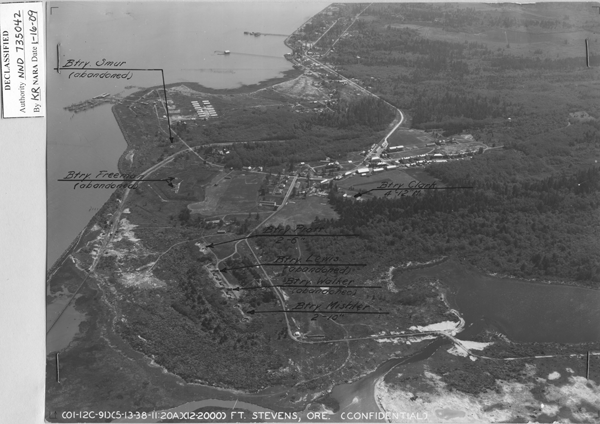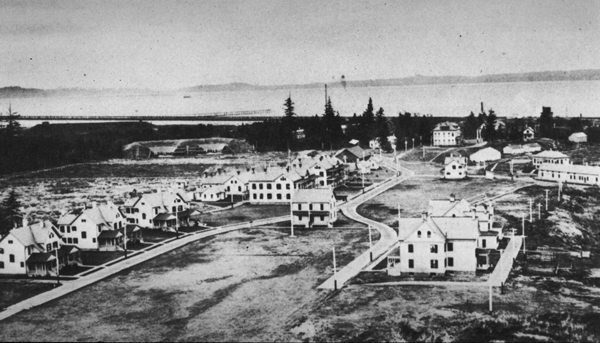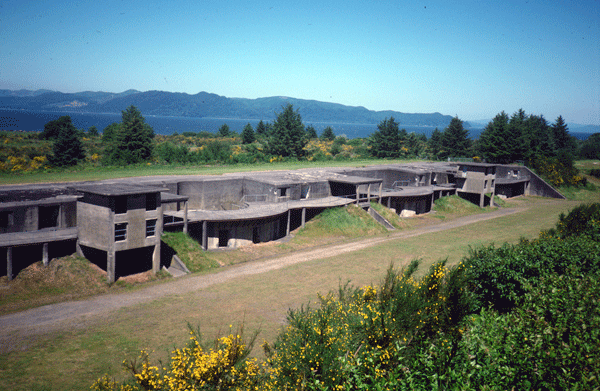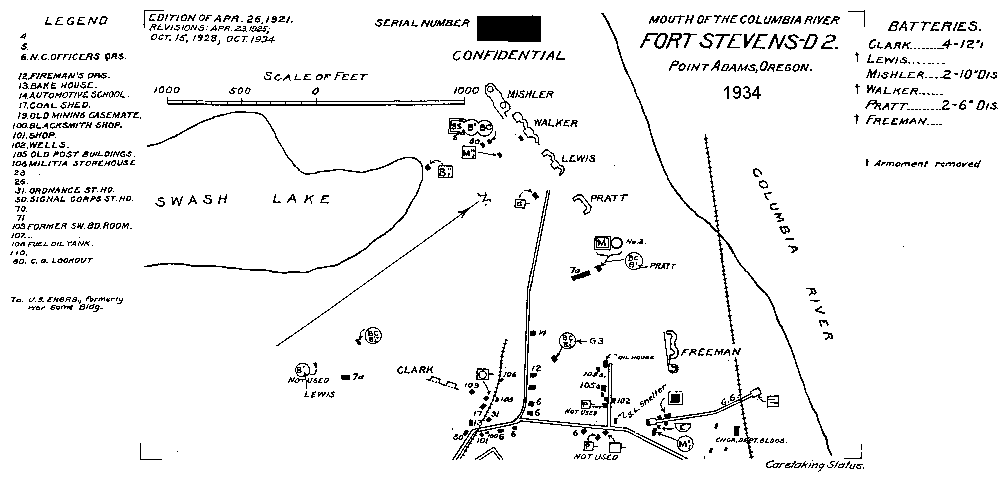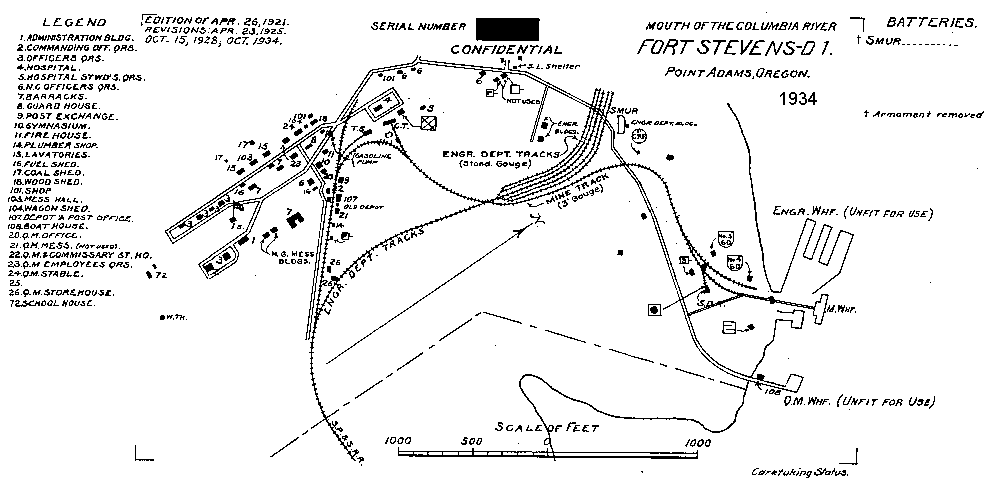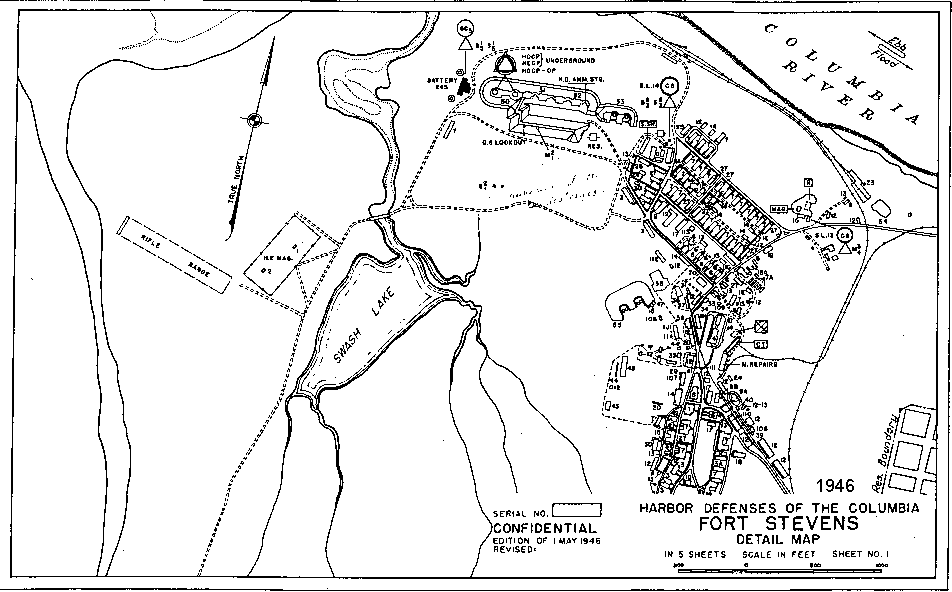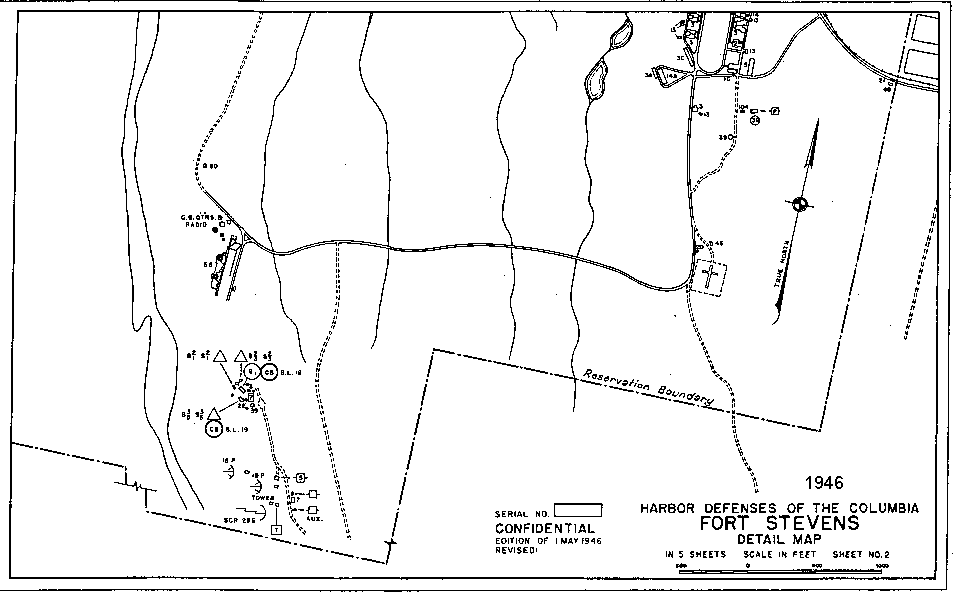Fort Stevens
Location (military name): Fort Stevens
Harbor: Columbia River
Descriptive location: Point Adams (next to Hammond, OR)
Years active military: 1863-1947
Named for: Brevet Major General Issac I. Stevens, killed in action at Chantilly, VA, 1862 (no general order)
- Fort Stevens (1937)
- Fort Stevens (Battery Russell area) 1937
- Fort Stevens garrison, 1930s
- Batteries Walker and Lewis (2003)
Current Status:
Current name of site: Fort Stevens State Park
Multiple owners: yes
Private Owners: yes (garrison area)
Public Owners: State of Oregon Dept. of Recreation & Parks (State Park)
Public accessibility: Yes
Museum/Interpretive Center: Museum
Other Facilities: Camping, picnicking, trails, beach access, swimming, bicycling, etc.
Contact address/Information:
Fort Stevens State Park, Ridge Road, Hammond, OR
Structures:
Pre-1890s structures: Civil War earthwork (original destroyed, being reconstructed)
Garrison: yes (several remain)
Fire Control: several
Mine Project: Mine Depot, Mine Casemate
Virtual Tour Pages
Historic Pictures of Fort Stevens
Emplacements/Batteries:
Battery William Clark (8-12″ Mortars)
Battery David Russell (2-10″ guns DC)
Battery Leverett Walker (2-10″ guns DC)
Battery Meriwether Lewis (2-10″ guns DC)
Battery Lyman Mishler (2-10″ guns DC)
BCN 245 (2-6″ guns BC)
Battery James Pratt (2-6″ guns DC)
Battery Constant Freeman (2-6″ guns Ped and 1-3″ gun MP)
Battery Elias Smur (2-3″ guns MP)
AMTB #6 (2-90 mm guns fixed and 2-90 mm guns mobile)
Radar: SCR 296 for BCN 245, SCR 548 for AMTB Btty #1
Reference Documents:
See Main Columbia River Page for more reference materials
Fort Stevens RCWs
Fort Stevens Quartermaster Building Records
Battery Construction at Fort Stevens
Internet Links:
Oregon State Parks site
Friends of Fort Stevens site
Battery Pratt Restoration Project
References: Hanft, Marshall, Fort Stevens, Oregon’s Defender at the River of the West, Oregon State Parks and Recreation Branch, Salem, OR 1980
Notes/History/Comments: Set aside by executive order in 1850, construction of a large earthwork was begun in 1863 and completed in 1865. New construction began in the mid-1890s for a main gun line. New garrison buildings were constructed and a mine depot was built on the reservation. Several weapons were removed in 1917-20. The fort was updated with some new mine depot facilities and a 6-inch gun battery during WW II. When a Japanese submarine fired several shells towards Battery Russell on June 20, 1942, the post became the only US fortification in the lower 48 states to come under fire by a foreign power since 1814. The post was ordered closed in 1947. The garrison buildings were sold to private owners after the post was closed. Fort Stevens State Park was created in the 1950s and eventually obtained the area around Battery Russell and the main gun line. The park is open year round, but the historical area is closed during the week during the winter season.
- Fort Stevens 1934
- Fort Stevens 1945
- Fort Stevens State Park (1994)

